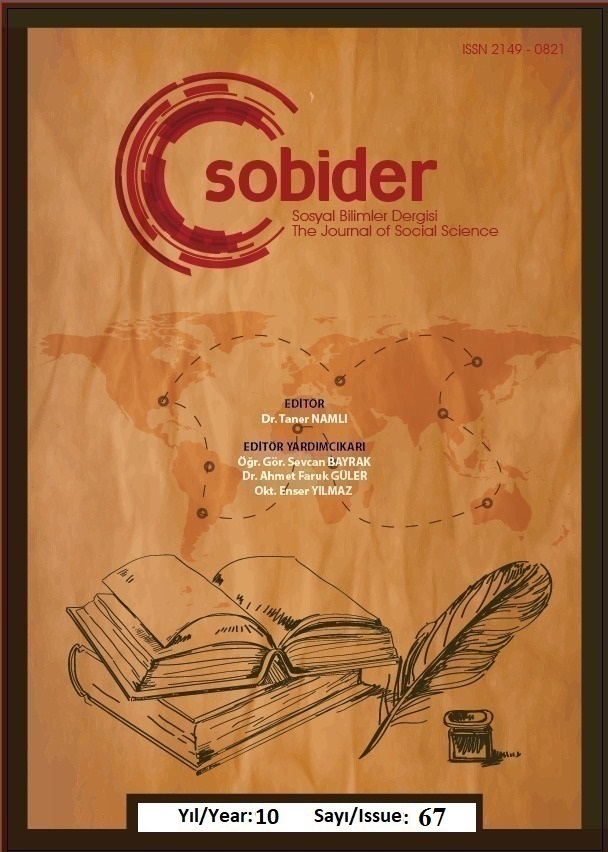ELİF ŞAFAK’IN KAYIP AĞAÇLAR ADASI’NDAKİ ÖYKÜLENEN İNCİR AĞACI MESELESİ YOLUYLA ETNO-BÖLÜNMÜŞ TOPRAKLARIN GERİ ALINMASI
Author :
Abstract
Elif Şafak’ın Kayıp Ağaçlar Adası, Türk askerinin adanın kuzeyine yaptığı askeri barış operasyonundan sonra bölünmüş Kıbrıs'ın travmatik tarihini ve bu durumun ardından adanın Güney Yunan ve Türk Kuzey olarak ikiye bölünmesini ve nüfusun yüzde otuzunun yerinden edilmesine yol açmasını kurgulamaktadır. Roman, bitmek bilmeyen çatışmanın betimlenmesiyle her iki tarafta da etno-milliyetçiliğin pençesine düştüğü kayıp kıta Kıbrıs'ın etrafında dönmektedir. Şafak’ın “çevresel boyutu bir arada yaşama ve çatışmaya” bağlayan romanı, ağaçların insan için yeni bir epistemoloji ve ontoloji yolunu teşvik ettiği ağaç bilimi çalışmalarının önemli bir örneğini sunar. Bu makale incir ağacının hikayeleşmiş bir konu olarak nesiller arası travmayı ve zorla bölünmeyi nasıl taşıdığını incelemektedir. İncir ağacının anlatım eyleyiciliği, anlatı sesi ve maddeselliği, doğayla ortak tarihi, kültürü, deneyimi, paylaşılan simbiyotik yaşamları geri kazanmanın bir yolunu oluşturmaktadır.
Keywords
Abstract
Elif Shafak’s The Island of Missing Trees fictionalizes the traumatic history of a partitioned Cyprus after Turkish military peace operation of the island’s North, leading to the subsequent division of the island into a Greek South and a Turkish North and the displacement of thirty percent of the population. The novel revolves around the lost land of Cyprus which has always been plagued by ethnonationalism on both sides with the characterization of never-ending confrontation. Linking “environmental dimension to co-existence and conflict” Shafak’s novel provides a palpable example of arboreal studies, where trees prompt a new way of epistemologies and ontologies for the human. This paper explores the ways and which the fig tree as a storied matter carries the transgenerational trauma and forced partition. The narrative agency of the fig tree, its narrative voice and materiality constitute a way to reclaim the common history, culture, experience, shared symbiotic lives with nature.
